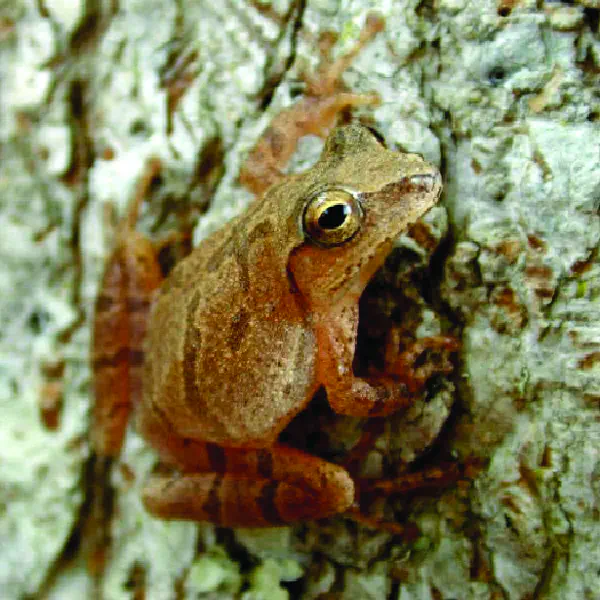Pseudacris crucifer
Table of Contents

Scientific Classification
| Kingdom: Animalia |
| Phylum: Chordata |
| Class: Amphibia |
| Order: Anura |
| Family: Hylidae |
| Genus: Pseudacris |
| Species: Pseudacris crucifer |
Conservation Status
Identifying Features
Spring peepers can range in color from brown to gray to a rusty orange. Despite their small size (0.75 - 2 inches), they have considerably large toe pads and display a dark “X” marking on the back that is sometimes incomplete.
Habitat & Range
Spring peepers can be found in woodland forests and grassy lowlands near the water and are widespread throughout eastern US and Canada.
Behavior
Spring peepers are nocturnal. They hide from predators during the day and emerge at night to feed. During colder months, they hibernate under logs or loose tree bark and wait until the weather thaws.
As their name suggests, spring peepers emit a high short “peep” right around the beginning of spring.
Life Cycle
Near the end of hibernation, spring peepers promptly begin their breeding period. During March - June, females will lay hundreds of eggs in shallow ponds. Within days, these eggs hatch into tadpoles and transform into adults by the end of summer.
Featured image by Sander van der Molen

